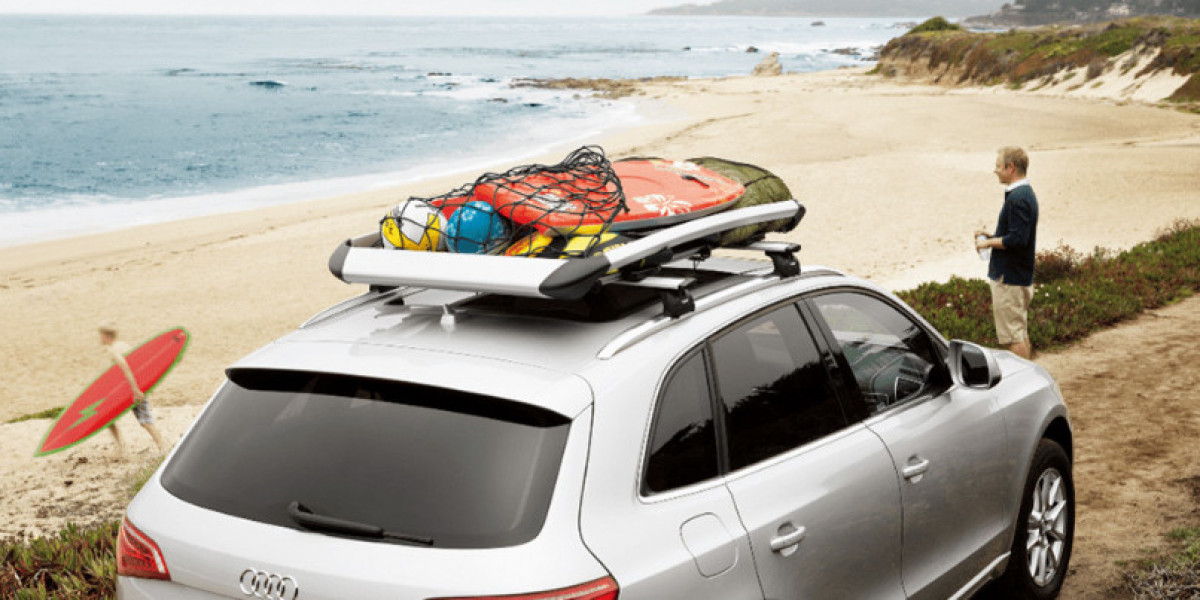If you’re planning a road trip, transporting outdoor gear, or just need extra space, a roof rack can be a game-changer. But before you load up your kayak, camping gear, or luggage, there’s one question you need to ask: How much weight can your car handle on a roof rack?
Overloading your roof rack can be dangerous. It affects fuel efficiency, vehicle balance, and even your safety on the road. That’s why it’s crucial to understand your vehicle’s roof weight limit—and how to stay within it.
In this blog, we’ll walk you through everything you need to know, including how to find your car’s weight limit, the different types of roof racks, how to pack safely, and a few tips to keep your vehicle running smoothly.
Understanding Roof Rack Weight Limits
Let’s start with the basics. There are two main weight limits to consider:
Static weight limit – How much weight your roof can hold when the vehicle is parked. This is important for things like rooftop tents.
Dynamic weight limit – How much weight your roof can safely carry while the vehicle is moving. This is what most people need to worry about when using a roof rack for travel.
Most vehicles have a dynamic roof weight limit between 100 and 165 pounds. That might sound like a lot, but it adds up quickly once you account for the weight of the roof rack itself and whatever you're loading on top—cargo boxes, bikes, kayaks, etc.
Where to Find Your Car’s Roof Weight Limit
The best way to find your vehicle’s specific weight capacity is to:
Check your owner’s manual – This is your go-to source for all weight-related information.
Look for a sticker on the door jamb – Some vehicles display load limits here.
Contact your car’s manufacturer or dealership – If you're unsure, it's better to ask than to guess.
You’ll also want to check the weight rating for your roof rack. Roof racks themselves can add 10–50 pounds depending on the material and design.
Pro Tip: Your total roof load = rack weight + cargo weight. Always keep this below your car’s dynamic weight limit.
Types of Roof Racks and Weight Considerations
Not all roof racks are created equal. Here’s a quick overview of the most common types and how they factor into your total weight:
1. Factory-Installed Roof Racks
These are built into the car at the time of manufacture. They’re generally designed to match the vehicle’s weight rating and are a convenient option for light to moderate loads.
2. Aftermarket Roof Racks
These racks are installed separately and can offer greater flexibility in terms of carrying specialized gear. Brands like Thule, Yakima, and Rhino-Rack often design systems with specific weight ratings.
Just be sure the rack system you choose is compatible with your car and stays within the manufacturer’s recommended weight limits.
3. Crossbars and Rail Systems
Crossbars are what you’ll attach your cargo to, and they must be secure and properly rated. Some systems distribute weight better across your roof, making them safer and more efficient for hauling.
How to Calculate Roof Rack Weight Capacity
To stay safe and legal on the road, here’s a step-by-step way to calculate how much weight your car can carry:
Find your car’s dynamic weight limit – Let’s say it’s 150 pounds.
Subtract the weight of the roof rack – If your rack weighs 30 pounds, you’ve got 120 pounds left.
Weigh your gear before loading – Bikes, boxes, or kayaks might seem lightweight, but even a single bike can weigh 25–35 pounds.
Double-check distribution – Keep heavier items centered and evenly spaced.
Example:
If your car’s dynamic limit is 150 pounds, and your roof rack system weighs 25 pounds, you can safely load up to 125 pounds of cargo.
Why Roof Rack Weight Matters
Here’s why all this matters:
Fuel Efficiency: Extra weight and drag hurt your gas mileage.
Handling & Safety: A top-heavy car is more likely to sway or tip, especially during sharp turns or strong winds.
Legal Limits: Some states have laws about maximum load heights and roof cargo.
Vehicle Damage: Overloading can lead to roof dents, broken racks, or even structural damage.
Tips for Safe Roof Rack Loading
Use tie-down straps – Always secure your cargo with quality straps or ratchets.
Distribute weight evenly – Keep the center of gravity low and centered on your car.
Avoid overhanging items – Don’t let gear hang off the front or back of the roof.
Check your load frequently – Especially on long trips or rough roads.
Don’t exceed your limits – It's better to make two trips or rent a trailer than risk overloading.
Common Items and Their Weights
Here’s a quick guide to the average weight of common items people carry on a roof rack:
| Item | Average Weight |
|---|---|
| Roof box (empty) | 30–50 lbs |
| Road bike | 18–25 lbs |
| Mountain bike | 25–35 lbs |
| Kayak | 35–70 lbs |
| Skis + gear | 20–40 lbs |
| Rooftop tent | 100–160 lbs |
| Luggage | 30–50 lbs each |
Keep in mind, if you’re carrying more than one of these items, the total weight adds up quickly.
Real-World Example
Let’s say you’re loading two mountain bikes and a gear bag:
Roof rack: 30 lbs
Two bikes: 60 lbs total
Gear bag: 40 lbs
Total Load = 130 lbs
If your car’s dynamic limit is 150 pounds, you’re in the clear. But if it’s 120 pounds, you’ve already gone over.
Rooftop Tents: A Special Case
If you're into overlanding or camping, you might be looking at rooftop tents. These require special attention because:
They often weigh over 100 pounds.
They usually exceed dynamic weight limits.
They're meant for use when parked (static load).
Before installing a rooftop tent, double-check your vehicle’s static and dynamic limits, and always mount them with an approved rack system.
What Happens If You Exceed the Weight Limit?
Overloading your roof rack can cause:
Rack damage – Cracks, breaks, or detachment.
Roof dents or cracks – Especially on smaller vehicles.
Handling problems – Poor steering, braking, or cornering.
Tire wear – Added pressure means uneven wear and tear.
Legal issues – In some areas, unsafe loads can result in fines.
It’s just not worth the risk.
Final Thoughts
Using a roof rack is a great way to extend your vehicle’s storage. But before you pile it high with bikes, gear, or luggage, be sure to know your car’s weight limits.
A little planning goes a long way toward keeping your trip safe, smooth, and legal. Whether you're a weekend warrior or a road-trip enthusiast, always take a few minutes to check your weight, pack smart, and secure your load.
FAQs
1. Can I use a roof rack without roof rails?
Yes, but you’ll need a roof rack system that mounts to your car’s roof using clips or a door-frame fit kit. Just make sure it's compatible with your vehicle and doesn’t exceed weight limits.
2. Do roof racks affect gas mileage?
Yes. A roof rack adds drag, and more weight means your car works harder, especially at highway speeds. Using a streamlined cargo box and removing your rack when not in use can help save gas.
3. Is it safe to drive with a full roof rack in the rain or wind?
Generally, yes—if your load is properly secured and within weight limits. However, wind can affect your car's stability when carrying tall or wide items. Always adjust your speed and driving style in adverse conditions.
Need a Roof Rack That’s Right for Your Car?
Check with your vehicle’s manufacturer or visit a local auto accessories store for expert recommendations. Whether you drive a compact sedan or a rugged SUV, there’s a roof rack system out there that fits your needs—and your weight limits.









